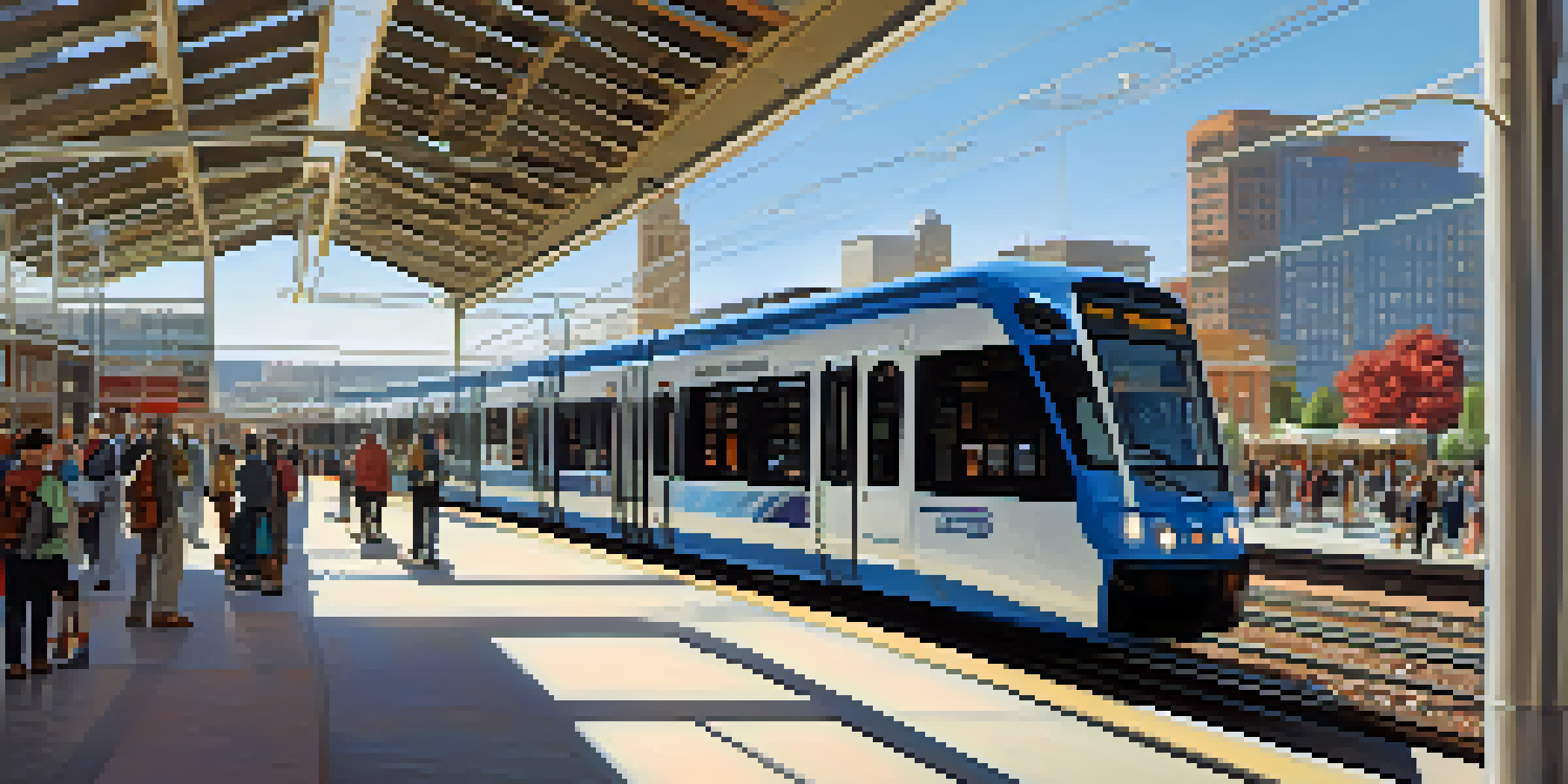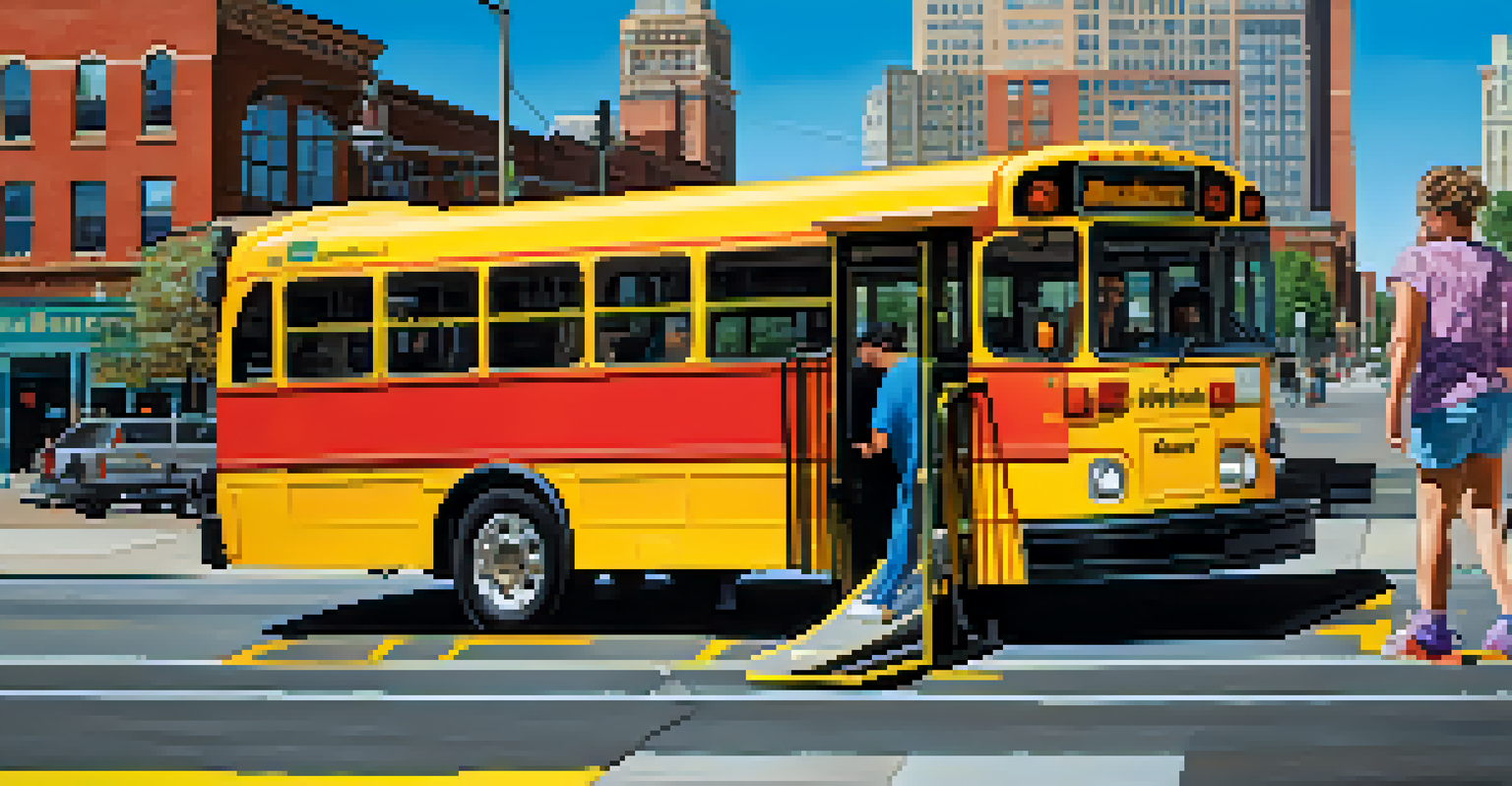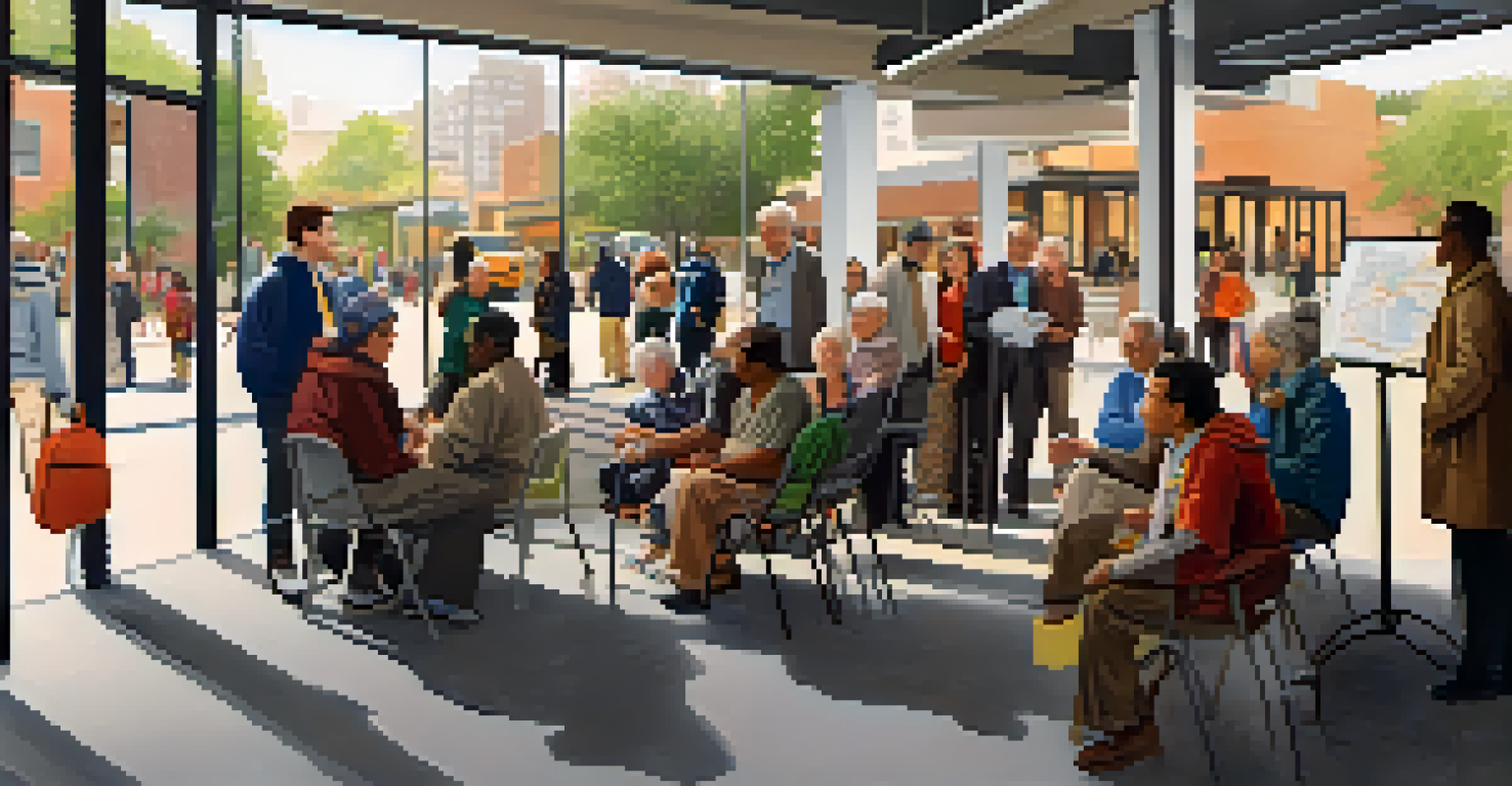Public Transportation Accessibility in Denver: Current Status

Overview of Public Transportation in Denver
Denver boasts a robust public transportation system that includes buses, light rail, and commuter trains. This network is essential for connecting residents to jobs, education, and essential services. With the growing population, public transit plays a pivotal role in reducing traffic congestion and promoting sustainable urban development.
Public transport is a lifeline for many people, providing access to jobs, education, and essential services.
The Regional Transportation District (RTD) manages the system, ensuring that it serves a diverse community. Over the years, Denver has invested in expanding and modernizing its transit options to meet the needs of its citizens. Understanding the current state of this system is vital for evaluating its accessibility for all users.
Accessibility isn’t just a buzzword; it’s a fundamental aspect that affects many lives. By analyzing the current status of public transportation in Denver, we can identify areas of success and those needing improvement.
Current Accessibility Features in Denver Transit
Denver's public transportation system incorporates various accessibility features aimed at supporting riders with disabilities. Many buses are equipped with ramps and designated spaces for wheelchairs, ensuring that everyone can board easily. Additionally, light rail stations are designed with elevators and tactile guidance for visually impaired passengers.

Moreover, RTD has implemented audio and visual announcements to assist those with hearing and sight impairments. These features help create a safer and more inclusive environment for all passengers. The ongoing commitment to enhancing accessibility reflects a broader understanding of the diverse needs of the Denver community.
Denver's Transit Accessibility Efforts
Denver's public transportation system includes various accessibility features, such as ramps and audio announcements, aimed at supporting riders with disabilities.
Despite these advancements, there’s always room for improvement. Continuous assessments and user feedback are essential to ensure that these features effectively meet the needs of all riders.
Challenges Facing Public Transportation Accessibility
While Denver has made strides in accessibility, challenges persist. One significant issue is the uneven distribution of accessible routes across the city. Some neighborhoods are better served than others, leaving certain residents with fewer options for public transportation.
Accessibility is not a privilege but a right; everyone deserves the same opportunities to travel and connect.
Additionally, physical barriers, such as poorly designed sidewalks and bus stops, can hinder access to transit. For individuals with mobility challenges, these obstacles can be daunting. Addressing these issues requires collaboration between city planners and public transit authorities.
It’s crucial to involve the community in these discussions to identify specific barriers and work towards solutions. Together, we can create a more equitable public transportation system that serves everyone.
Community Feedback on Transit Accessibility
Gathering feedback from the community is essential in understanding the real-life experiences of transit users. RTD conducts surveys and holds public meetings to collect input from riders regarding accessibility issues. This feedback not only highlights successes but also uncovers areas needing attention.
Many riders have expressed concerns about the frequency and reliability of accessible services. Ensuring that these services are not only available but also consistent is vital for maintaining trust in the system. When users feel heard, they are more likely to engage with public transportation.
Community Engagement is Crucial
Gathering user feedback through surveys and public meetings helps identify accessibility issues and ensures that the transit system meets the needs of all riders.
Creating accessible transit solutions requires a commitment to ongoing dialogue between the community and transit authorities. By listening to the voices of riders, policymakers can make informed decisions that enhance the overall experience.
Innovative Solutions for Improving Accessibility
In response to the challenges faced, Denver has begun to explore innovative solutions to enhance transit accessibility. One such initiative is the implementation of on-demand shuttle services that cater specifically to individuals with disabilities. These services provide flexible options for those who may not be near a regular bus or train route.
Additionally, technology plays a significant role in improving accessibility. Mobile apps that provide real-time information on transit options can help users navigate the system more effectively. Features like trip planning and service alerts empower riders to make informed decisions about their journeys.
These innovations not only enhance the user experience but also demonstrate a commitment to inclusivity. By leveraging technology and creative thinking, Denver can continue to lead the way in accessible public transportation.
Government Initiatives Supporting Accessibility
The local government has recognized the importance of accessible transportation and has launched several initiatives to support this cause. Funding is allocated to improve infrastructure, such as upgrading bus stops and ensuring compliance with the Americans with Disabilities Act (ADA). These efforts are crucial for creating a more inclusive transit environment.
Moreover, partnerships with nonprofit organizations advocate for the rights of individuals with disabilities. These collaborations help raise awareness about accessibility issues and can lead to meaningful changes in policies and practices. Engaging with these groups ensures that the voices of those affected are included in decision-making processes.
Innovative Solutions for Better Access
Denver is exploring innovative solutions like on-demand shuttle services and mobile apps to enhance transit accessibility for individuals with disabilities.
Sustained government support is essential for advancing accessibility in public transportation. By prioritizing these initiatives, Denver can create a more equitable transit system that benefits all residents.
Looking Ahead: The Future of Transit Accessibility
As Denver continues to grow, the focus on public transportation accessibility must remain a priority. Future developments should include further investments in accessible infrastructure and innovative solutions to meet the needs of all riders. Creating a comprehensive plan that addresses current gaps will be key to achieving this goal.
Community engagement will play a vital role in shaping the future of transit accessibility. By involving residents in discussions and decision-making, the city can build a system that truly reflects the needs of its diverse population. This collaborative approach fosters a sense of ownership and accountability among stakeholders.

Ultimately, the goal is to create a public transportation system that is accessible, reliable, and welcoming for everyone. With continued effort and commitment, Denver can pave the way for a brighter and more inclusive transit future.